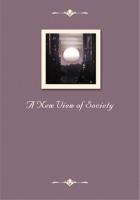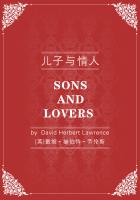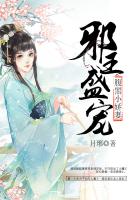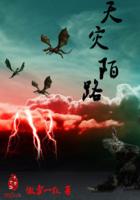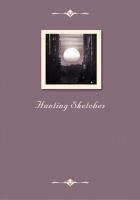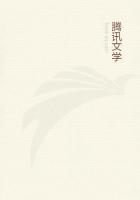Concerns about the weather are also reflected in British cultural life。 For example, because rain is as common as cats and dogs on the street, so in English when they describe the heavy rain, the British simply say “It rains dogs and cats”。 It’s so vivid。
对天气的关注也反映在英国人的文化生活中,比如下雨如同街上的小猫小狗一样常见,因此在英语当中,形容下大雨时,英国人干脆说成是“猫猫狗狗”。这十分的形象生动。
In the office, colleagues often murmured new colleagues。 If you hear “he does not even take an umbrella”, it means that people think the newer is not stable enough, and lack of consideration。
在办公室里,同事间常会私下议论新同事,如果听到“他连雨伞都不带”,就说明大家认为这位新人不够稳重、做事欠考虑。
During the age of Industrial Revolution, the dust pollution in the air once often led to “Black Rain” in London, Manchester and other big cities which made the gentlemen in white shirt have to care about the weather, because if they went out without an umbrella, they would be made fun of being a “zebra” or “leopard” by his colleagues around him。
在工业革命时代,空气中的粉尘污染曾经让伦敦、曼彻斯特等大城市常常降下“黑雨”,这让爱穿白衬衣的绅士们不得不关心天气,因为一旦没有带伞出门,自己难免就会被身边同事取笑成“斑马”或是“花豹”。
Although British people like to complain about bad weather, they generally put a brave face on it。 If someone complains about too much rain, you might hear: “Never mind—it’s good for the garden。” If someone complains that it’s too hot, you could hear: “At least my tomatoes will be happy。” If the conversation has been about general bad weather, perhaps someone will say: “Well, I’ve heard it’s worse in the west。 They’ve had terrible flooding。”
虽然英国人喜欢抱怨天气不好,但他们总能乐观面对。比如有人抱怨雨水过多,你可能会听到:“没关系。这雨水对花园好”,如果有人抱怨说,天儿太热了,你能听到:“至少我的西红柿会很快乐。”如果谈话是关于普遍的恶劣天气,也许有人会说:“嗯,我听说西方的天气更糟糕,他们已经有可怕的洪水了。”
Let’s Talk!
开始交流吧!
Yang Hu: I didnt see you for a tong time, where have you been?
杨虎:好久没见,你去哪儿了?
Wang Dong: I went to the UK, just returned last night。
汪董:是啊,我去了英国一趟,昨晚刚回来的。
Yang Hu: Did something funny happen in the UK?
杨虎:那你在英国有没有发生什么趣事啊?
Wang Dong: Not really, but I understand the principles of getting on with the British。
汪董:趣事倒没有,不过,我明白了一个与英国人打交道的原则。
Yang Hu: What principles? Tell me。
杨虎:什么原则,快说来听听。
Wang Dong: That is, if you want to talk with them, you can pick up the topic of weather。
汪董:就是如果你想和英国人讲话,那你就讲天气。
Yang Hu: But what do they say about weather?
杨虎:可天气有什么好讲的啊?
Wang Dong: I do not know, maybe it is their national habit。 In addition, I found out a very strange phenomenon in England。 They will take an umbrella even in a sunny day。
汪董:不知道,这是他们的习惯吧。而且,我在英国发现一个很奇怪的现象,他们上街都会带着一把伞,即使是晴天。
Yang Hu: Do they use umbrellas to shade sunlight?
杨虎:他们用伞来遮阳吗?
Wang Dong: No, they just take it。
汪董:不撑,就只是拿着。
Yang Hu: This is really strange, and could only be explained by “different ethnic groups have different styles”。
杨虎:这可真是奇怪啊,只能用“各民族有各民族的风格”来解释了。
Wang Dong: Right, travelling around can broaden our horizon。
汪董:对啊,去别的地方转转,能开阔咱们的眼界呢。
Uncle Sam
山姆大叔
山姆大叔主要在美国、英国的新闻报道中被用来代指美国或美国政府。“山姆大叔”是美国五大象征之一,它同自由女神一样,为世人所熟知。在美国的报纸杂志、文学作品和漫画中,经常可以看到“山姆大叔”的名字及其生动的形象。在不同画家的笔下,“山姆大叔”神态各异,有的凶狠可憎,有的和蔼可亲。但最常见的形象还是高高的个子、瘦削的面庞,头戴星条高顶帽,身穿燕尾服和条纹裤,虽白发苍髯,却精神矍铄,一派威仪。这一形象深受美国人民的喜爱。
Realize Uncle Sam
认识山姆大叔
1山姆大叔简介
Uncle Sam is a common national personification of the American government originally used during the War of 1812。 He is depicted as a stern elderly man with white hair and a goatee beard。 Typically he is dressed in clothing that recalls the design elements of the flag of the United States—for example, a top hat with red and white stripes and white stars on a blue band, and red and white striped trousers。 The first use of Uncle Sam in literature was in the 1816 allegorical book The Adventures of Uncle Sam by Frederick Augustus Fidfaddy。
Earlier representative figures of the United States included such beings as “Brother Jonathan”, used by Punch magazine。 These were overtaken by Uncle Sam somewhere around the time of the Civil War。 The female personification “Columbia” has seldom been seen since the 1920s。 The well-known “recruitment” image of Uncle Sam was created by James Montgomery Flagg, an illustrator and portrait artist best known for commercial art。 The image of Uncle Sam was shown publicly for the first time, according to some, in a picture by Flagg on the cover of the magazine Leslie’s Weekly, on July 6, 1916, with the caption “What Are You Doing for Preparedness?” More than four million copies of this image were printed between 1917 and 1918。 The image also was used extensively during World War II。
There are two memorials to Uncle Sam, both of which commemorate the life of Samuel Wilson: the Uncle Sam Memorial Statue in Arlington, Massachusetts, his birthplace; and a memorial near his long-term residence in Riverfront Park, Troy, New York。
2山姆大叔个人
The American icon Uncle Sam was in fact based on a real man, albeit a beardless one。
A businessman from Troy, New York, Samuel Wilson, provided the army with beef in barrels during the War of 1812。 The barrels were prominently labeled “U。S”。 for the United States, but it was jokingly said that the letters stood for “Uncle Sam”。 Soon, Uncle Sam was used as shorthand for the federal government。
The man himself looked nothing like the gaunt, steely-eyed patrician of popular lore。 The Abe Lincoln look, along with the star-spangled outfit, was a product of political cartoonist Thomas Nast, who was one of the most popular artists of the 1800s。
Uncle Sam became a useful icon in cartoons, much like the John Bull character who represented the United Kingdom。 John Bull and Uncle Sam have squared off in hundreds of political cartoons throughout the years。
The most famous image of the Uncle Sam persona was a World War I recruiting image that depicted a stern Sam pointing his finger at the viewer and declaring, “I want you”。 It was painted by artist James Montgomery Flagg in 1916, just prior to US involvement in World War I by or even based on the character Sam Slick, created by Canadian。
山姆大叔的形象代表了美国,是美国人很好的榜样,也是很好的写照。山姆大叔这个名字的由来也颇具戏剧性。山姆大叔在美国有很高的声誉,和美国人讨论他时,每一个美国人的脸上都洋溢着骄傲的神情。
Key words & Sentences
关键词句全知道
Uncle Sam is one of America’s national symbols。
山姆大叔是美国的国家象征之一。
The United States Congress adopted a resolution which saluted Uncle Sam Wilson as the origin of America’s National symbol of Uncle Sam on September 15, 1961。
1961年9月15日,美国国会通过一项决定,将山姆?威尔逊大叔作为国家象征。

